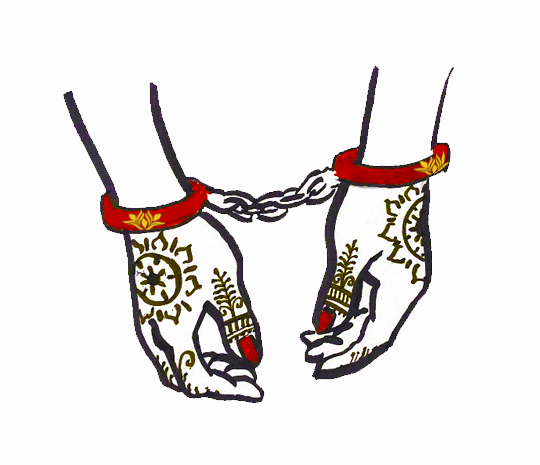Indian government perpetuates violence against women

Handcuffed Woman
December 30, 2019
The following article contains extremely sensitive content concerning rape and sexual assault.
Priyanka Reddy was brutally raped and murdered by four men in India who noticed her alone at night. They deliberately gave her scooter a flat tire, trapping her to do what they would please. The men took turns raping her and suffocated her to keep her from crying out. They knocked her unconscious and poured fuel into her mouth. They burned her. Her remains were only recognizable by the few pieces of jewelry that withstood the flames.
She had called her sister before the crime, telling her that she was stranded with strange men. Her sister contacted the police, who laughed it off, claiming that Reddy had likely run off with a man.
Violent acts like that against Reddy aren’t new and don’t only exist in India, but the sheer cruelness of the acts are what make them truly shocking.
“Sexual assault isn’t higher or more common in India compared to the rest of the world, but the brutality and lawlessness of it is extreme, resulting from corrupt systems,” Shailja Dixit, a trained domestic violence counselor for Pleasanton-based non-profit SAVE, said.
Sexism thrives in India through India’s gender norms. These misconceptions have created an atmosphere that perpetuates violence against women.
Based on reports, 70% of women in India have, at one point, experienced domestic violence. Over 300,000 cases of violence against women were reported in 2015. The majority go unreported and of the reported, only a few face consequences.
Violence against women is violence directly against females or violence that disproportionately affects women, such as domestic violence, sexual assault and psychological abuse.
Despite police officers being legally required to file a sexual assault complaint — facing up to two years in prison if they don’t — these laws aren’t strictly followed, especially regarding women of marginalized communities, like lower castes.
Aside from societal hierarchies, women in India are known through their relation with a man. A woman is first a mother, sister, wife or daughter before her own being, so any harm that comes to her is insignificant in the public’s eyes.
Despite legal action taken against such crimes, the social structure of India is one built by the patriarchy running rampant through the nation. Women are so financially and socially dependent on men that they are unable to break such cycles of abuse.
On top of this, in a survey conducted at Indian factories by Forbes, 34% agreed that there are times when a woman deserves to be beaten, and 36% agreed that if a woman seems interested after a supervisor gives suggestive comments, it’s not sexual harassment.
Education is the solution, specifically by providing resources for women. Hotlines, teachers and counselors are essential in curbing the effects of violence against women.
The patriarchal hypocrisy is clear in Indian culture; despite the majority Hindu population who pray to and respect Indian goddesses, they subject females to horrors from infanticide and child marriage to sexual and domestic abuse.
Altogether, the sheer extremes that the Indian patriarchy perpetuates upon women harm their physical, psychological and social health and standing. Legal change means nothing without social change, which will only come when India lets go of tradition.
India’s obsession with its history and tradition makes progress nearly impossible.
The times have changed. India must catch up.


